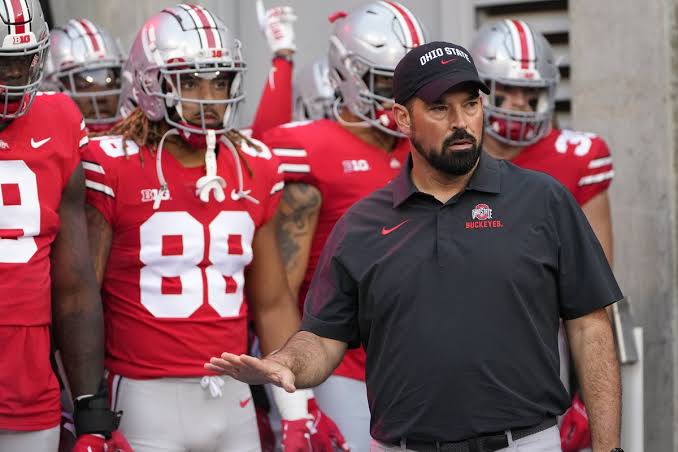According to reports, the Maple Leafs are anticipated to deal a prospective free agent forward.
The Toronto Maple Leafs are facing significant decisions as the trade deadline approaches, and one of the most intriguing prospects is dealing with a potential free agent forward. This scenario has been widely discussed, as the Maple Leafs are looking to balance both short-term success and long-term financial flexibility.
Context and Potential Trade Rationale
The Toronto Maple Leafs have been in the midst of a competitive rebuild, but they have yet to achieve ultimate success in terms of Stanley Cup victories. The team is built around several high-profile players, including Auston Matthews, Mitch Marner, and William Nylander, and they continue to focus on acquiring key pieces to strengthen their roster. However, one of the challenges the team faces is how to handle players who are set to become unrestricted free agents, especially if those players are on the edge of having a career year or showing promise.
According to several insider reports, the Leafs are likely to trade a forward who will be an unrestricted free agent at the end of the season. This potential move comes with several reasons behind it. First and foremost is the team’s salary cap situation. With Matthews, Marner, and Nylander consuming significant portions of the salary cap, managing the cap efficiently becomes essential. By trading a forward who is heading toward free agency, the Leafs could clear up some cap space to help with re-signing players they view as crucial for future success. This trade could also give them the flexibility to bring in a rental player, someone who can add depth and help push for a playoff run.
Secondly, the team may want to avoid losing a key player for nothing in free agency. If they don’t manage to secure a contract extension before the deadline, they could lose that player without receiving any compensation. While many teams would prefer to keep their roster intact for a playoff push, Toronto is in a position where losing a player without getting anything in return could be detrimental to their overall strategy.
Who is Likely to Be Traded?
There are a few candidates who fit the description of a potential free agent forward. While the specific player has yet to be confirmed by reliable sources, it’s possible that someone like Ryan O’Reilly, Alex Kerfoot, or Noah Gregor could fit into this scenario. All three players have contracts set to expire at the end of the current season and play positions where the Leafs might feel comfortable trading a pending UFA.
- Ryan O’Reilly: The 32-year-old center was brought in to provide leadership and two-way play, but he could be a trade candidate if Toronto feels that it won’t be able to reach an agreement on a new contract. O’Reilly, who previously won the Selke Trophy as the league’s best defensive forward, has added veteran presence to the Leafs’ lineup. However, his age and potential cap hit could be a concern for the organization if a trade would help them maximize their salary cap flexibility for the future.
- Alex Kerfoot: Kerfoot, known for his versatility, has often been used in a variety of roles but hasn’t always been able to find consistency in his offensive production. With a contract that will expire soon, Kerfoot could be another prime candidate for a trade if the Leafs feel they could use his spot to add someone more dynamic or simply prefer the cap flexibility his departure would create.
- Noah Gregor: Gregor is a younger player who has shown flashes of potential but hasn’t yet fully established himself as a key player for the Leafs. Given his relatively low salary, he could be an attractive trade piece for Toronto to acquire additional assets or prospects, though the likelihood of this trade happening would depend largely on team needs and his development over the season.
Impact on the Team’s Playoff Push
If the Leafs do move a forward in advance of the trade deadline, it would undoubtedly have an impact on the roster for the remainder of the season. The team would need to ensure that the remaining forwards are capable of stepping up in terms of offensive production, especially in the case of dealing away a player with significant skill. Toronto’s ability to replace the traded player could be crucial to their playoff aspirations. They might look to acquire a rental player in return or move someone else into a larger role.
The Maple Leafs are also looking at improving their defensive and goaltending situations, areas that have historically been seen as potential weaknesses for the team. The forward group, while talented, might be considered less of an immediate need for improvement in comparison to their defensemen or netminder. Still, a trade would need to help the team balance their priorities and make sure they remain competitive.
In addition to these potential moves, Toronto’s leadership group has expressed a strong desire to bolster the team’s offensive depth, which could make trading a forward especially difficult. As the team faces some of the toughest competition in the league, a trade of this nature could impact both the on-ice chemistry and the team’s strategic approach.
Market Demand for Free Agent Forwards
The market for free agent forwards tends to fluctuate as trade deadlines approach, depending on how teams are performing and what they believe they need in order to improve their chances of success. Teams that are in playoff contention are often looking for depth scoring, leadership, and experience, and players like O’Reilly or Kerfoot could fit the bill for those teams in need of such attributes. As always, the return the Leafs receive would be largely determined by the demand for the player, how much cap space a potential trading partner has, and whether the Leafs are willing to retain salary as part of the trade.
Conclusion
As the Toronto Maple Leafs approach the trade deadline, the possibility of dealing a prospective free agent forward remains a compelling option for the franchise. While the Leafs have some significant stars under contract for the long term, their need to manage the salary cap, maintain roster flexibility, and ensure they don’t lose assets for nothing in free agency could prompt them to move one of their pending free agents. The decision will ultimately come down to how the team evaluates its playoff chances, future financial planning, and the kind of return they can secure through trade. The next few weeks will be crucial in shaping the Leafs’ strategy for both the remainder of the season and their long-term goals.


